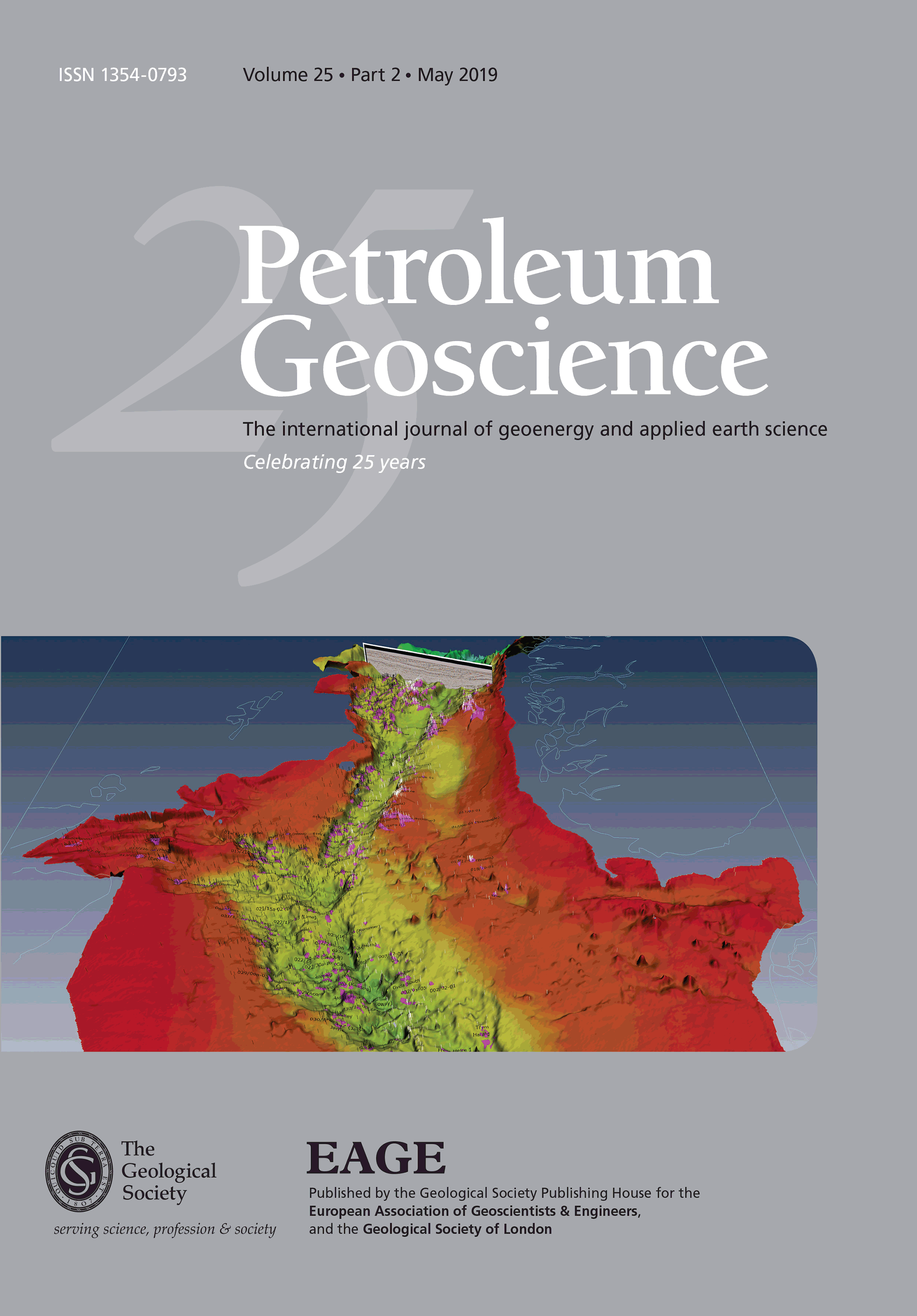
Full text loading...
Distal intervals of interbedded sandstones and mudstones in shallow-marine, wave-dominated shoreface and deltaic reservoirs may contain significant hydrocarbon resources, but their reservoir properties are difficult to predict. Relatively small-scale (200 × 100 × 20 m) three-dimensional object-based reservoir models, conditioned to outcrop analogue data, have been used to investigate the controls on the proportion of sandstone, the proportion of sandstone beds that are connected by sandstone-filled erosional scours and the effective vertical-to-horizontal permeability ratio (k v/k h) of such intervals. The proportion of sandstone is controlled by sandstone-bed and mudstone-interbed thickness, and by parameters that describe the geometry, dimensions and lateral-stacking density of sandstone-filled scours. Sandstone-bed connectivity is controlled by the interplay between the thickness of mudstone interbeds and sandstone-filled erosional scours. Effective k v/k h is controlled by the proportion of sandstone, which represents the effects of variable distributions and dimensions of mudstones produced by scour erosion, provided that scour thickness is greater than mudstone-interbed thickness. These modelling results provide a means of estimating the effective k v/k h at the scale of typical reservoir-model grid cells using values of mudstone-interbed thickness and the proportion of sandstone that can potentially be provided by core data.

Article metrics loading...

Full text loading...
References


Data & Media loading...

